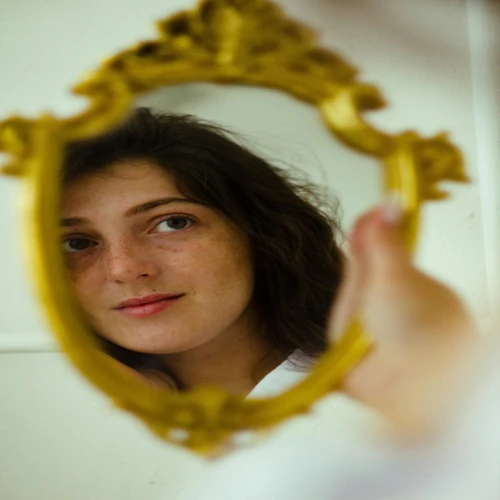You Don’t Look Autistic: Reclaiming Identity and Belonging as a Late-Diagnosed Woman
“You don’t look Autistic.”
It’s a phrase many late-diagnosed Autistic women hear–intended, perhaps, as a compliment, but in reality, it reinforces one of the most harmful misunderstandings about autism: that it has a “look.”
Autism is not something you see. It’s something you live.
The Hidden Lives of Autistic Women
For many of us, discovering we’re Autistic in adulthood is both a revelation and a reckoning. We finally have language for the way we’ve always experienced the world–and we begin to understand that what made us feel “different” for so long is actually a neurological difference, not a personal failing.
This moment of diagnosis–whether formal or self-discovered–is the beginning of a deeply personal journey. It often triggers a re-examination of our entire lives: the friendships that never quite fit, the exhaustion after socializing, the relentless pressure to conform, and the trauma of not knowing why it all felt so hard.
We don’t all have the same story, but many of our stories rhyme.
What Autism Actually Looks Like
Autism is a lifelong, neurological difference that affects how we communicate, process sensory input, regulate emotion, and relate to others. It doesn’t present the same way in every person, and in women, it often gets missed.
We don’t “look” Autistic because we’ve spent years–sometimes decades–learning to mimic, mask, and manage. We copy and paste social behaviours. We smile when we don’t feel like it. We script conversations in our heads. We learn to pass and pay the price in burnout, anxiety, and disconnection.
Here are some common ways autism shows up in women:
- We feel more comfortable writing than speaking in person.
- We have deep, passionate interests–often misread as workaholism or obsession.
- We excel in structured environments but shut down in chaotic ones.
- We crave solitude, routine, and predictability.
- We are sensitive to light, sound, temperature, and touch in ways others don’t notice.
- We stim–but we hide it.
- We struggle with flirting, subtle social cues, and unwritten rules.
- We internalize anxiety and suppress our needs to fit in.
- We may lead, succeed, and appear highly capable. But beneath the surface, we are often overwhelmed, exhausted, and longing to be truly seen.
The Parallel Journey: Autism and Sexuality
For many late-diagnosed women, discovering our Autistic identity runs parallel to unpacking our sexual self-concept. Years of masking can sever us from our own desires, boundaries, and needs. Some of us have experienced manipulation or trauma because we missed subtle social cues or were too trusting.
Understanding autism allows us to reclaim not only our neurodivergent identity–but also our right to safe, authentic relationships and embodied sexual autonomy.
The Diagnosis That Changes Everything
A diagnosis doesn’t always come through a clinician’s office. It might be sparked by your child’s diagnosis, a social media post that hits too close to home, or a conversation with another woman who shares your lived experience.
However it arrives, it marks a turning point. The start of unmasking. Of softening. Of self-trust.
In my work as a psychotherapist, sex therapist, and researcher, I’ve had the honour of walking beside countless Autistic women as they reclaim their stories. I’m now writing a book and dissertation project that weaves together clinical insights, personal experience, and narrative therapy to offer late-diagnosed women a compassionate, empowering guide to understanding themselves.
No One Looks Autistic
If there’s one thing I wish the world understood, it’s this:
There is no one way to be Autistic. And no one way to look it.
Autistic women are leaders, mothers, artists, professionals, advocates, and dreamers. We are detailed, intense, honest, loyal, funny, and creative.
We belong. It’s time we stop hiding and start being heard.
If you’re a woman wondering if you might be Autistic–or navigating life after a late diagnosis–I see you. You are not alone, and there is nothing wrong with you.
References
Clemente, R. (2023). Autism in women and girls: detection and diagnosis.
Hendrickx, J. (2024). Women and Girls on the Autism Spectrum: Understanding Life Experiences from Early Childhood to Old Age. London, UK: Jessica Kingsley Publishers.
Hill, A. (2021, November 19). ‘Diagnosis is rebirth’: Women who found out they were autistic as adults. The Guardian.
Lopez, K., Nicolaidis, C., Garcia, A., Waisman, T. C., Cascio, M. A., & Feng, B. (2022). An expert roundtable discussion on intersectionality and autism in adulthood. Autism in Adulthood, 4(4), 258-264.
Seers, K., & Hogg, R. C. (2021). ‘You don’t look autistic’: A qualitative exploration of women’s experiences of being the ‘autistic other.’ Autism, 25(6), 1553-1564.; Evans, Krumrei-Mancuso & Rouse, 2024
Taylor, J. L., & DaWalt, L. S. (2020). Working toward a better understanding of the life experiences of women on the autism spectrum. Autism, 24(5), 1027-1030.; Ochoa-Lubinoff, C., Makol, B. A., & Dillon, E. F. (2023).


